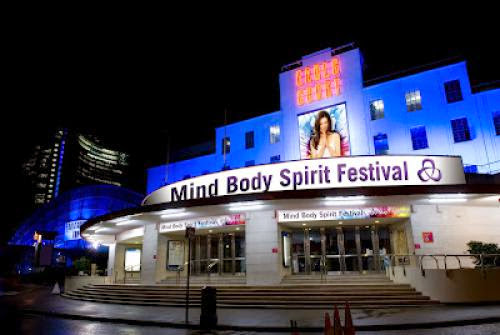
Though there is nothing new in the movie that atheists and skeptics don't already know and that people don't casually discuss at parties now and again, by bringing together so many pathetic expressions of religiosity from the major Abrahamic faiths and by giving special exposure to the more extreme wings of Christianity and the mindless mobs in the Islamic world screaming, "Kill the infidel," the movie paints it all as one horrible heap of anachronistic nonsense with hardly an iota of grace or goodness.
The most simple-minded spokespersons for various denominations were enticed to participate in the production of the movie, and they unwittingly serve its goal: to reveal religions as roaringly ridiculous.
This film fits well in our age of open warfare between religion and unreligion, faith and unbelief, tradition and modernity, theism and atheism, and many such opposites. We also live in an age in which stand-up comics can comment on theology, the simple-minded can be tricked into public exposure by clever journalists, and everyone can express every view in public forums and on Internet landscapes, a sort of globalization of Hyde-park oratory.
The presentation of the litany of awkward niches of Abrahamic religions is authentic though disdainful. The intent, I understand, is to make the institutions look ridiculous, but perhaps one can be humorous without being insulting-however, this would require a different approach. Then again, Bill Maher cannot refrain from sexual innuendos and once-considered vulgar language in his commentaries because that is part of today's public joke repertoire.
The snapshots of religion we see on the screen are truthful but lopsided. They are truthful because they come from the mouths of the horses, if one may modify a metaphorical phrase. Maher cleverly makes them self-incriminate. We simply laugh in pity. They are lopsided because religions have many dimensions: First, there are the illogical beliefs and narrow bigotry to which the naively religious are fettered. Then, there are the records of and the capacity for hate and horror in the name of God, which have not abated in our own times. It is on these alone that Maher's lens focuses.
But then religions have also inspired love and compassion, charity and hope. Maher takes us to small town churches, where he embarrasses simple-minded preachers, and to the outside of St. Peter's Basilica, but he has no interest in showing us the cathedral in Chartres, the Raf'ai mosque in Cairo, or any of the hundreds of other magnificent places of worship where people gather in awe and humility, with reverence and peace. He does take us into the Al Aqsa in Jerusalem (formerly the Temple of Solomon), where a religious head says with a straight face that the prophet who arrived there from Mecca on a flying horse was bodily carried away to heaven from that very spot.
Maher's documentary can surely jolt many non-book-reading people into rethinking their religious framework. It is not likely that many adults whose worldviews have been molded by years of upbringing will abandon their traditional adherence to basic beliefs, but the movie may goad them to separate the spiritually meaningful from the blatantly untenable elements within their belief systems.
My dissatisfaction with the movie is that Maher makes no reference to the great art, glorious music, or grand poetry that have been created by deep religious attitudes. Nor is there any mention of the solace and peace that religions have brought to countless millions in moments of despair and sorrow. But then, one may argue that this movie is intended to show the inanity of religious beliefs, not the genuineness of religious feelings, let alone the now-past capacity of religions to create some of the most beautiful aesthetic expressions of human culture.
It would have been a better movie for me if, after exposing the ridiculousness of some of the archaic beliefs and making every religious person look foolish, Maher recognized that if we all appreciate the positive contributions of religions, honor our ancestors for the cultural richness they have left behind, continue to enjoy and share the great art and music of various religions, and adhere to the core message of love and service implicit in all religions, we could hold hands together as members of the same human family to resolve the myriad problems we are facing as a planetary species.


















